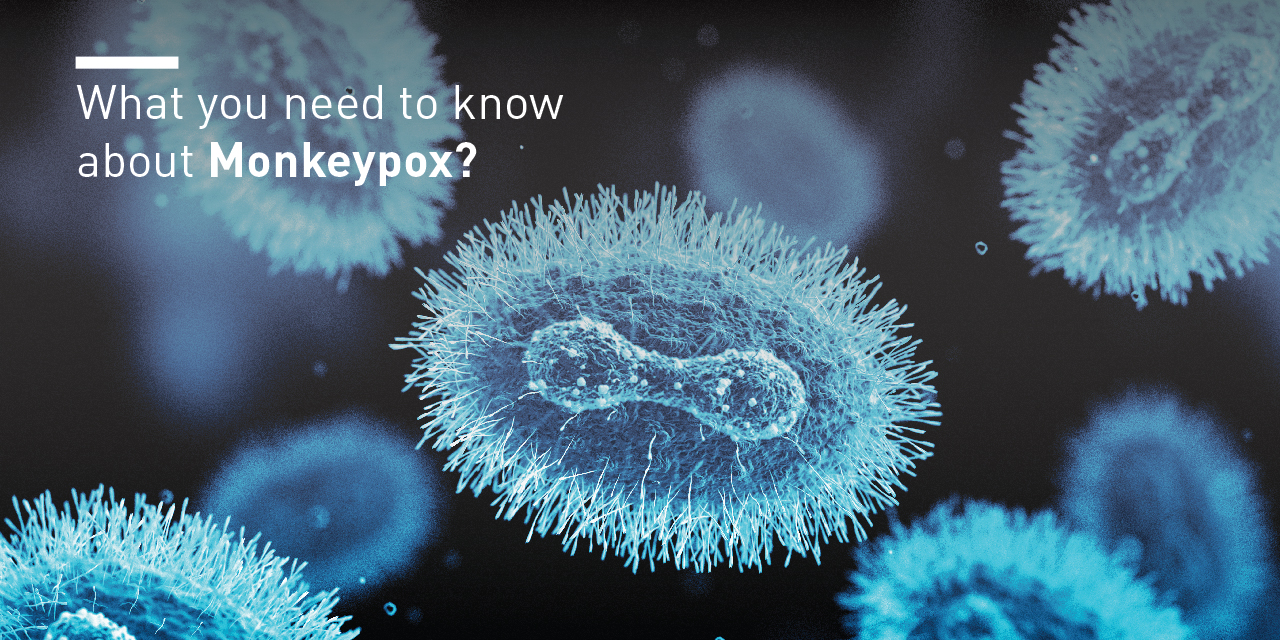Monkeypox virus (MPV) is a double-stranded DNA virus that causes fever and other health ailments in infected humans and animals. This disease can result in fever, nausea, headache, tiredness, and rashes and blisters all over the patient’s body. This disease has been central to Western and Central Africa, majorly the Democratic Republic of the Congo, since 1970 when the first human case was recorded. Monkeypox got its name in 1958 when monkeys kept for research were found to have the pox-like disease.
Today, Monkeypox has become a more searched term over the internet and a topic for many news reports. The reason behind it is the outbreak in non-African nations and the United States because of international travelers and imported animals like African rodents and other non-human primates that harbor the virus and infect healthy people. Talking about the current scenario, on 18 May 2022, a British man traveling from Nigeria tested positive for Monkeypox in the UK, and now several cases of Monkeypox are reported daily globally. This is the first-ever instance of Monkeypox being widely transmitted outside of Africa.
Efficacy and Virulence Nature of the Monkeypox Virus:
The effects of Monkeypox disease can be debilitating. It rarely results in death, but it can leave patients bedridden for weeks. Even if the patient is free from the virus, the patient can be left with scars and some health deformities. It can also result in a weakened immune system and can cause diseases like pneumonia, or loss of vision.
Thankfully, it is very rare and it is having less contagious nature than the COVID-19 virus, as it can only be spread through close physical contact with an infected person or animal.
According to healthcare practitioners across the world, the vaccine for the Smallpox Virus is effective in reducing the risk of getting Monkeypox as well, reducing the risk even further.
Signs and Symptoms in People Affected with Monkeypox:
Monkeypox in humans in the initial stages shows symptoms like fever, chills, muscle aches, headaches, and exhaustion. These indications are the same as smallpox. But, the most reliable clinical sign that can help people differentiate Monkeypox from smallpox is the swelling or enlargement of the lymph nodes- a condition called lymphadenopathy. Particularly, this occurs in submental, cervical, submandibular, and inguinal lymph nodes. The symptoms appear in humans typically after 7-14 days of incubation of the Monkeypox virus but can also range from 5-21 days.
After the onset of fever, usually after 1-3 days or longer, the patient develops skin rashes often starting from the face and spreading to other body areas. Monkeypox lesions tend to appear in different stages progressing through macular, papular, vesicular, and pustular before scabs are formed. Some patients have ulcerative lesions. Typically, the illness stays for 2-4 weeks. It is important that if one is experiencing any signs and symptoms, they must contact a healthcare professional for immediate diagnosis and avail for initial treatment (if detected positive).
How does Transmission of the Monkeypox Take Place?
Monkeypox is zoonotic meaning the transmission takes place from infected animals to humans. It can occur through direct contact with body fluids, blood, mucosal/cutaneous lesions, or even intake of inadequately cooked meat of the infected animals. There are also reports about human-to-human transmissions via respiratory droplets, human body fluids, ruptured skin or mucous membrane exposure to monkeypox sores, and indirect contact with lesions such as through contaminated linens or clothing.
Monkeypox in India:
To current date, about 1250 + cases have been reported worldwide. This includes countries from all over Africa, America, Asia, and Europe. Fortunately, there are currently no cases of Monkeypox in India. However, given the high population density found in India, if Monkeypox were to spread, it would spread extremely fast.
The Government of India is warning citizens to stay safe, maintain social distance, and follow proper hygiene practises.
How To Prevent The Spread of Monkeypox:
Monkeypox patients must be kept in isolation and appropriate precautions must be taken to prevent the spread of the disease as it is contagious until all the scabs get dried and fall off. To avoid contracting this illness, do not have direct or indirect contact with infected animals and humans. Any items that have been in contact with a sick animal or infected person must not come in contact with a healthy person. In addition, one must get vaccinated with smallpox or Monkeypox vaccine as it can prevent the disease or avoid its severity.
It is always advised by every doctor to practice good hand hygiene, for instance, washing hands with soap and water or sterilizing hands with an alcohol-based sanitizer. This is important if you have accidentally or non-accidentally touched infected humans or animals. When caring for Monkeypox patients, it is recommended to use Personal Protective Equipment or PPE kits.
Hence, the main strategy to prevent Monkeypox disease in humans is to raise awareness among people of possible risk factors and educate them about the measures that can be taken to reduce viral exposure and spread.

